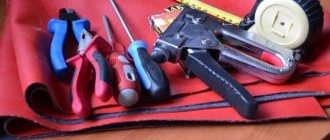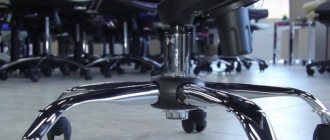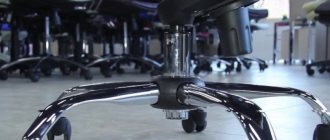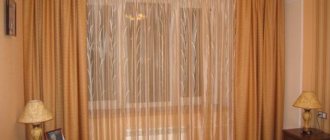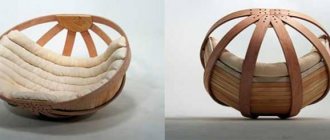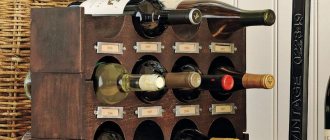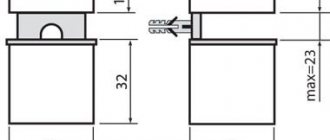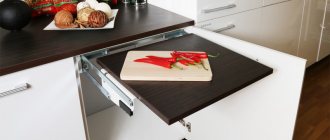Making a hanging chair with your own hands is a feasible task, the main thing is to choose a convenient manufacturing technique. As a child, everyone loved swings. The gentle rocking is so calming. And it is not surprising that as adults everyone wants to return to these moments of calm and tranquility. A hammock stretched between two old trees at the dacha and a wicker hanging chair gently swinging on the veranda of the dacha - such a swing will win the love of any adult and, of course, children.
Making a hanging chair with your own hands is a feasible task
Choosing a base
To make a hanging chair, completely different materials are used. It all depends on what the frame will be like. Today the following designs are relevant:
- Rigid frame. Traditionally, structures are made from rattan or wicker rods. In a modern interpretation, you can find metal, plastic and acrylic frames. The rigid frame is covered with dense fabrics or braided with vines. Acrylic chairs are spherical in shape.
- Soft frame. Fabrics are traditionally used for such chairs, and their closest relative is the hammock.
- Cocoon shape. A cocoon, or egg chair, made on a rigid frame with wickerwork, will appeal to those who like to be alone with themselves. The walls are wide and will cover the person sitting, and the interior space is hidden deep down. A separate world is created for those sitting in such a cocoon. In such a hanging cocoon you can hide from the outside world and enjoy your vacation.
- Drop shape. This shape is good when you need a children's hanging chair. Usually this is a chair in the form of a small house or cradle. You can sleep soundly in it or play hide and seek.
To make a hanging chair, completely different materials are used.
When choosing a frame, you should pay special attention to the place where the structure will hang; the type of fastening and for whom exactly it is intended depends on this. If there are small children in the house, then the hanging element of the interior should be as durable and reliable as possible. For options used in open spaces, for example, in a country house, mobility is important so that, if necessary, the structure can be quickly removed and it does not get wet in the rain.
The following describes in more detail how to make a chair with your own hands; the master class is not difficult!
Upholstery
As such, the concept of upholstery is absent in wicker models. The use of textiles comes down to equipping the “cocoon” with a soft seat. He'll need some tight fitting. Fortunately, there is plenty to choose from:
- Matting. Can be linen, cotton. This is 100% natural fabric with a large, pronounced weave texture. Excellent ventilation, absorbs moisture, and is resistant to fading. The fabric is dense and does not stretch. Disadvantages include unsightly color, some roughness;
- Jacquard. Wonderful fabric with a double-sided silk pattern on a matte base. The pattern has a convex effect. Excellent performance. Additional special impregnation will give the material the ability to repel all types of dirt, water and resist animal claws (stretch guard);
- Microfiber. Delicate material. When touched, it looks like short-haired short-haired fur. At the same time, it is highly durable and does not cause allergies. But, it is difficult to care for him;
- Microvelvet. A modern version of corduroy. The pile is double-sided. Performed in 3 options. Smooth, with a small vertical edge or embossed with a small pattern (part of the pile is pressed down). Soft, but very durable. Resistant to fading. Tolerates frequent washing well;
- Flock. Tactilely pleasant material with nylon fleecy coating. Durable, but afraid of all aggressive cleaning agents. Eliminate even those that contain alcohol. This will cause the pile to peel off. Poor-quality flock will “go bald” from contact with the body;
- Alcantara. This material is an artificial substitute for suede. It has the same velvety surface and softness. At the same time, Alcantara is easy to clean, does not deform when wet, and is resistant to stretching. It is widely used for covering not only furniture, but also car interiors. Service life is average. Over time, the fabric wears out.
- Cotton. Good fabric with high density. Well ventilated, hypoallergenic. But it is better not to use it in its pure form. Percentage dilution with synthetic fibers reduces the tendency of the material to form pills.
A simple hoop device
One of the easiest options for making a chair with your own hands is a chair with a hoop base. The frame here was an ordinary hula hoop. If such sports equipment is sitting idle in the house, you can give it a second life. Of course, a plastic hoop is not suitable here due to its fragility, but a metal hula hoop will do. There are two ways to make a chair: with one hoop and two, different in diameter.
We also recommend reading:
Advantages of cast iron benches Sweet bell peppers: secrets of growing Motor pumps: overview of faults and operating rules Description of Cordana roses and their varieties, rules of planting and growing
Frame
Let's see what types of housing there are:
- One-piece fiberglass mold. Standard option. It is made of special plastic, the structure of which is reinforced with fiberglass. Very durable. The absence of joints and seams makes the structure extremely durable. Withstands weight up to 130 kg. The inside is invariably covered with a continuous layer of porous foam filler;
- Metal carcass. This option can be attributed to the favorite option of “folk craftsmen”. The thin metal tube completely repeats the famous silhouette. Additional bent stiffening ribs are also attached along the back. Additionally, flat overlays are used to maintain a rounded shape. The entire structure is carefully packaged in a case made of 6 - 8 layers of fiberglass. Epoxy resin is used for bonding. Then the filler and covering are applied. For those who are not deprived of modeling talents, this method allows you to save on the considerable price tag for such a chair (about 40,000 rubles).
Gallery: hanging chair (25 photos)
Design on two hoops
More often, chairs are made using the macrame weaving technique, like a regular hammock, but not everyone has this skill, and therefore you can make a chair in another way, more common and simpler.
To make such a chair, the list of necessary materials will change:
- 2 metal hoops of different diameters - 0.7 and 1.1 m;
- nylon cord 1 m long, thickness not less than 4 mm (can be replaced with linen or jute rope);
- nylon cord for cables: length – 12 m, thickness – 7 mm;
- metal pipes: diameter -25 mm, 2 pieces (can be replaced with a rope with a diameter of 12 mm).
Where to put it?
The floor model can be placed in any place convenient for you. Often such chairs are placed next to the coffee table, in front of the TV or fireplace. The suspended model on a rod requires more free space due to swinging. This should be kept in mind.
This chair cannot be moved without dismantling.
It is important to consider several points here:
- there should not be any hanging products nearby (for example, chandeliers);
- there should be enough free space so that when swinging the product does not touch other furnishings;
- the chair should not block the passage or interfere with freedom of movement.
Wicker cocoon made of willow
In the middle of the last century, a hanging wicker chair or wicker chair was considered chic and fashionable. Today, furniture made from natural materials is not losing its position. For production they use willow twigs, willow trees, rattan and bast are perfect. Russian producers most often use willow and willow.
You can make a wicker children's hanging cocoon chair (hanging because it is in a suspended state) with your own hands. The art of weaving requires considerable effort and patience. The weaving pattern depends on the skills of the craftsman. Rattan is perfect for beginners, as it is more flexible and manageable.
Materials required for work:
- willow twigs - 500 pieces with a diameter of 1-2 mm;
- the front part should be framed from a metal hoop or pipe (braided rods can be used);
- strong twine for wrapping;
- glue;
- nylon cord with a diameter of 4 mm, natural color;
- cables for fastening the finished product.
You should start by preparing the vines. To make it pliable for weaving, it should be steamed and cleared of bark. The peeled vine is beaten back.
If the frame of the chair is made of hoop, then to give it the shape of a cocoon it needs to be bent so that it becomes an oval or egg shape.
Advice! The cocoon or egg chair shape comes out better from a metal-plastic tube. It can be easily given any shape.
Instructions:
- Step 1. First prepare the cross. 3 or 4 rods are tied together with twine in the shape of a cross. The twine is coated with glue. The length of the rods is selected based on the diameter of the future seat.
- Step 2. The crosspiece is wrapped around a thin rod. It should alternately be on top or below the crossbar rods.
- Step 3. In the same way, a circle for sitting with a diameter of 70-90 cm is wrapped, rod by rod, in the same way. The last rod in the weaving is tied with twine and coated with glue.
- Step 4. Now you can weave the basket. Weaving a cocoon chair is the same as weaving a basket, with the only difference being the weaving of the seat. The first step is to install the frame rods. They are attached to the main frame and woven seat using twine coated with glue. The frame rods are fixed at intervals of 2-2.5 cm. They form the back and depth of the future chair.
- Step 5. The main rods are threaded perpendicular to the frame rods. Weaving starts from the bottom. Rising up, the body of the chair is created. Weaving is carried out horizontally in relation to the main frame and begins from the middle of the back of the chair. The ends of the rods are braided around the front part of the frame made of a hoop or tube. The rods are pressed tightly one to one. The ends of the last rod are pushed with an awl into the main weave of the chair.
- Step 6. Cables for hanging are installed in the finished cocoon.
How to choose?
p, blockquote 28,0,0,0,0 —>
p, blockquote 29,0,0,0,0 —>
When choosing an IKEA hanging chair for your interior, it is important not to mistakenly purchase a fake instead of an original brand product. What you need to pay attention to:
- The company's products are produced in series for various purposes: for the dining room, for the nursery, for the kitchen. The items included in the series are united by a single style, color scheme, and the principle of complementarity. Each model has a serial number; its absence is a sign of a fake.
- The design of all IKEA products has its own distinctive features: simple, clear forms without frills, a minimum of decor, precise proportions, and the use of decorative fabrics. The appearance of the furniture clearly expresses the main ideas of the company’s brand design: elegant simplicity, convenience, functionality. IKEA chairs are distinguished by a more compact shape and dense braid. Long-time “fans” of IKEA furniture can easily recognize it by these features.
- A long-term warranty for most products - up to 10 years - will be provided only by IKEA. If the receipt is preserved, the broken chair can be exchanged for a new one even after six years in a company store, or a refund of the amount of money spent can be issued. When purchasing an imitation branded chair, the buyer will not be provided with such a service. No other manufacturer will undertake such obligations.
- IKEA furniture also stands out in terms of its cost; it is usually lower than similar products from other manufacturers. The cost-effectiveness of products is achieved through special technology and marketing of IKEA; this is the main principle of its policy.
- When buying an IKEA chair, it would be a good idea to check the quality of the selected product, personally verify the strength of the fastenings and the reliability of the mechanisms.
p, blockquote 30,0,0,0,0 —>
p, blockquote 31,0,0,0,0 —>

